These Latinx are changing Berlin’s artistic scene and proudly putting their culture on display in the German capital.
The Songwriter: Ceci Bastida
At just 15, Mexican singer-songwriter Ceci Bastida got her start in music by joining the endlessly rebellious ska-punk band Tijuana No! She toured with the group for over a decade before launching a solo career and eventually moving to Los Angeles, where she wrote songs that straddled the political and the personal.
Last year, when her husband accepted a fellowship in Berlin, Bastida packed two small keyboards, a pair of headphones, a drum machine, and a mic. She settled in the German capital, joining the ranks of countless musicians who seek refuge in the city’s ever-flourishing creative scene. For Bastida, the change of scenery has been a welcome opportunity to recalibrate artistically and find a new stream of inspiration to channel into her music.
“The rhythm here is different, and I feel like social life is as important as work. What has been inspiring is just being able to be outside and see people get together and go out in the city—it sounds cheesy, but it really is about the energy,” she says. “Sometimes in L.A., people are in their own world and it can feel a little less connected.”
Bastida usually sets out to explore the city on her bike, relishing in the space and quiet Berlin can offer. In her leafy, suburban neighborhood of Wannsee, Bastida has given herself the headroom to tinker over songs and consider new projects, including a documentary about migration in Tijuana that she’s set to produce. Most importantly, she’s letting herself take her time: “I’m trying to be patient with myself and be okay when the work goes more slowly.”
“The rhythm here is different, and I feel like social life is as important as work. What has been inspiring is just being able to be outside and see people get together and go out in the city—it sounds cheesy, but it really is about the energy.”
The DJ: Isa GT
When Colombian actress-turned-DJ Isa GT moved to Berlin in 2016, she immediately noticed the lack of Latin American sounds in the city’s explosive, primarily electronic music scene. She quickly came up with a solution: with a friend, she launched Delicia Latina, a small but wild and proudly queer dance party known for its carefree atmosphere and eclectic mix of throwback cumbia, salsa, merengue, and Latin pop classics.
“We said, ‘Let’s start a party where we can play our nostalgic Latin songs from when we were teenagers hanging out in minitecas,” she remembers. “There are so many cheesy songs from that era that have been ingrained into us Latinx, so we started to play them here—and it caught on.”
Isa GT has a penchant for creating spaces. In her short time in Berlin, she’s corralled a group of queer, boundary-pushing Latinx artists, and together they promote dance events like Delicia Latina, as well as radio programs, DJ sets, and other performances. Their work refuses stereotypes around gender, sexuality, and identity that Isa GT says permeate heavily masculine Latinx cultures. “The idea is to bring something new and queer to the Latinx world which has always been so machista,” Isa GT explains, “and Berlin is a space where we can do that.”The backdrop to these conversations is a city with a long tradition of allowing LGBTQ and sexually fluid communities to flourish. Berlin has been a queer hub for decades; it became home to the world’s first gay magazine, Der Eigene, in 1932 and offered spaces for gay men and women even before World War I. Its LGBTQ subcultures have continually evolved, opening a space for important dialogues that would be harder to initiate in other parts of the world.
“Berlin has always been a bohemian city. There’s a freedom here, especially in art, and a sexual freedom that makes it interesting for queer people and creative people,” says Isa GT. “It’s a city that makes a big impact on you.”
The Director: Simon(e) Paetau
In the last 10 years, Simon(e) Paetau has produced an impressive string of films and theater performances exploring the gray areas of identity and history. The work is complex and experimental, often forcing audiences to confront the boundaries of the self, postcolonial theory, and heteronormative constructs. In Cruising in High Heels, two queer artists challenge the expectations society has forced upon them, and in The Whisper of the Jaguar, a work that won Paetau the Best Director award at the Festival Internacional de Cine de Cartagena de Indías, a city punk goes on an Amazonian spiritual quest that unravels an indigenous history of resistance.
Paetau’s experience living between two cultures plays a crucial role in these probes into liminal spaces and dualities. Although born in Germany, Paetau’s family comes from Colombia. “I’m a child of the diaspora,” Paetau says. And while Paetau’s art passionately interrogates cultural dichotomies, it can be complicated to gain support for these types of projects, even despite Berlin’s reputation as a creative capital.
“The Latinx community here is smaller, so it’s hard to get funding and it can feel like the work is invisible. There’s no state interest in these cultural groups, which is crazy to me as a German-Colombian, having been born here,” Paetau said. “I’ve made work in Cuba and in Colombia, but it’s more of a struggle when these subjects unfold in Germany.”
That doesn’t stop the bold director. Through the Résidence du Festival de Cannes, Paetau is developing Rebels on Heels, a feature film that tells the story of a second-generation German-Colombian trans woman in Berlin. Sometimes, Paetau thinks about moving to another country, but a tight-knit chosen family has kept the artist grounded in Berlin, as does the city’s interdisciplinary approach to creative work. “When people make art here, they aren’t restricted to only theater. It’s not only music. It’s not only art,” says Paetau. “They go out of their comfort zone to try new mediums.”
And, even when the city is at its most challenging, it offers opportunities for growth. “Berlin gets the worst and the best out of you,” Paetau says. “It confronts you very hard with yourself and it’s a constant negotiation, but you learn a lot. And I find I am still learning a lot.”
The Performer: Aerea Negrot
Venezuelan vocalist and musician Aerea Negrot can’t be boxed in. She refuses binaries and restrictions. Even her sound—a mix of atmospheric pop, glitch-happy electronics, operatic vocals, and techno club sounds—is almost impossible to classify. And Negrot prefers things that way.
Since moving to Berlin 15 years ago, Negrot has built a platform for herself by popularizing her music and creating songs that reflect the complexities of her experiences as a trans person who has overcome the obstacles thrown at her: “My dialogue revolves around melancholy, nostalgia, and traumas that you transform into dreams. Many artists talk about love and ‘Why did you leave me?’ But I use the traumas and anxieties I’ve had in my past as crutches to keep on living,” she explains.
The message has resonated. Negrot has become one of the most recognizable Latinx performers in Berlin, and has also toured in Europe and parts of Latin America to familiarize other audiences with her radical proposition. Despite success, the working life of an artist comes with its struggles, which are often most palpable when Negrot is in Berlin: “I’m singing and laughing, like Charlie Chaplin, but no one is there for your interior life when it’s Monday morning and you turn the light on in your apartment and think, ‘Jesus, where am I?’ Still, I use my music as the weapon, or the bow and arrow, to fight back the weight of society.”
Negrot often thinks about her next destination; she’s drawn especially to Latin America or Africa. Her modus operandi is to never get too comfortable and to resist when life begins to feel complacent. She rejects the idea of an organized community, and relishes in the looser connections she has among queer Latinx artists in Berlin. “None of us are saying, ‘We’re a group for queer people! We’re culture! We’re this!’ There are no rules or standards around what you have to be. We’re here like passengers on the same train, but we’re not really forcing a conversation,” she says. “There isn’t a system of trying to institutionalize anything; people come here because we’re sick of feeling like we have to follow a kind of social order.”
The Chef: Mauricio Acosta
On any given night, La Lucha is flooded with visitors—usually a young international set, waiting under curls of colorful papel picado decorations as servers deliver small plates reflecting the restaurant’s modern twist on Mexican dining.
Chef Mauricio Acosta is usually in the back of the pastel-painted space, ensuring that each item is artfully prepared. He’s been in charge of the kitchen for more than a year now, and he brings previous experience running a small Mexican spot in the neighborhood of Prenzlauer Berg. Since arriving to Berlin from Mexico City, he’s been eager to represent down-home cooking styles that shatter German misconceptions about Mexican cuisine. “There was a prevailing idea here that Mexican food was only burritos or nachos or chili con carne, or what we know as Tex-Mex. But I always wanted to show the identity of real Mexican kitchens,” he says.
Acosta, who attended culinary workshops in Mexico, had traveled extensively along tiny towns tucked in the country’s mountain ranges and in the sierra, uncovering cooking traditions. “I was always interested in how the pueblo cooked. You can learn in culinary school, but it’s completely different than if you go directly into the neighborhoods and the kitchens and the streets,” he says. When he moved to Berlin, he used those lessons to open a neighborhood eatery. “Germans were really open to it, and it gave me the most incredible experience, learning how German gastronomy works,” he remembers.
Acosta’s restaurant eventually closed, but the owner of La Lucha quickly brought him in, leveraging his aptitude for creative fusion dishes that blend Mexican techniques with European ingredients. On the menu, Acosta might brainstorm a ceviche with German herring, or top a sea bream with spicy chile de arbol sauce.
“I have Mexican people who come to the restaurant and say, ‘Well, this isn’t 100 percent Mexican in terms of the ingredients, but when I bite into it, it’s completely Mexican.’ They feel the essence… If you an extract the techniques, you get a new world of ideas every time.”
The Dancer: Jair Luna
For dancer Jair Luna, inspiration often comes from the dynamics of city life. “My movements come from the street, they come from seeing people at night, from bars, from clubs, from observing someone walking on the sidewalk. I get a lot of what I see happening right in front of me,” he says.
Luna also draws from his expansive classical training. He studied contemporary dance at Cartagena de Indias’ El Colegio del Cuerpo, and has worked with choreographers all over the world. He started coming to Berlin with different dance companies and eventually received invitations to perform alongside local artists. Luna decided to stay in the German capital for good. “Berlin is a place that represents possibilities and lets artists realize their work,” he explains. “I think, as a city, it has interest in new perspectives, and I was attracted to it because it’s possible to live here if you’re an independent artist. It’s more affordable, and it can be rude, but it gives you the space to be able to think.”
These days, Luna collaborates frequently with other artists and has worked with some of Berlin’s best-known theaters, including the Maxim Gorki Theater and the Sophiensaele. But he also makes sure to float freely and create work outside of dance institutions, motivated by the city’s open attitude toward dance. “It’s a place that dances one way or another. It moves, its dynamic and incites movement, because of the way you have to live here. I think it dances on its own,” he says.
Luna recently performed a solo piece called “Memory of Dislocation” at the Ballhaus Naunynstraße in March, and he’s starting to brainstorm ideas for a new project. He’s been ruminating on Colombia’s indigenous communities and ancestral ways of living, but so far is enjoying how open the conceptualization process is. “I don’t know what it’s going to be yet,” he says. “But there is always inspiration.”
Words by Julyssa Lopez
To Read More INTELIGENCIA stories like this one, go here.







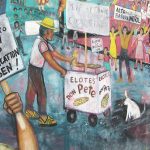

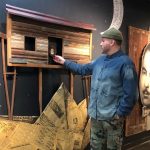


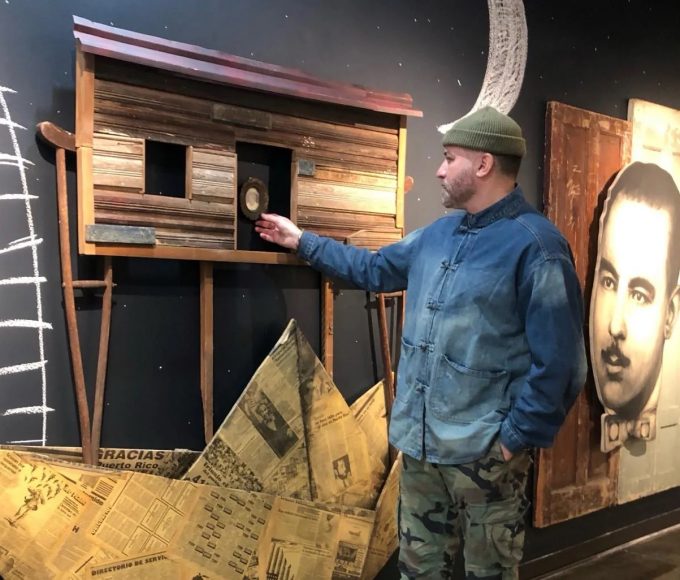
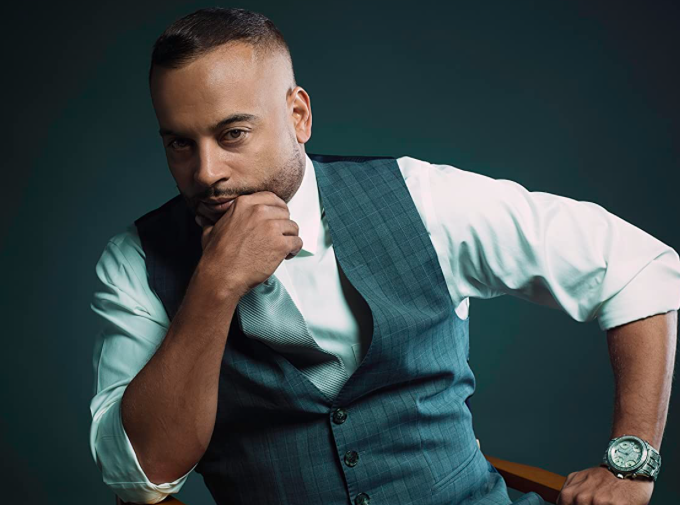
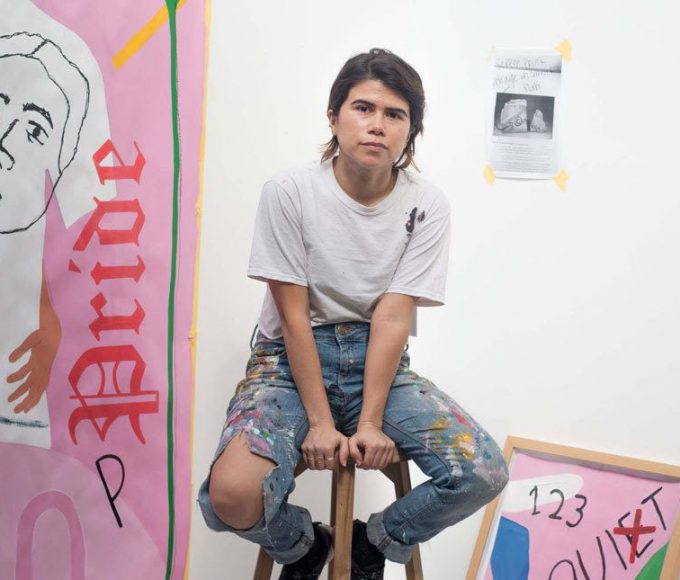
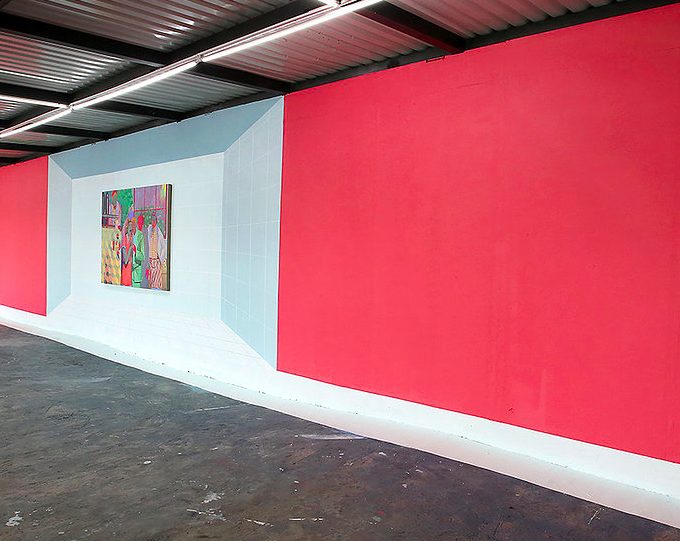

Leave a comment